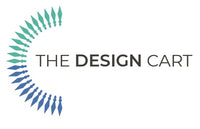How to source Apparel and Textile?
Apparel and textile sourcing is an important part of the entire apparel business. Balancing cost, capacity and compliance while looking for fabrics, is not an easy task. Every garment begins with textile fabric sourcing; it is the fabric which brings a design to life. Apparel business runs in a fast evolving and demanding environment. However, in such a scenario, textile apparel sourcing is the key to stabilize any apparel business. A right sourcing decision brings stability to the entire procedure. It is bound to generate greater efficiencies by bringing flexibility to the entire supply chain. Textile fabric sourcing has different meanings for a brand and different for the manufacturer. For brand; sourcing is the right manufacturer who can deliver quality garments at the right price, time and quality. However, for the manufacturer; it is the vendor from where they procure raw material.
The cost is not the only factor. Agility, proximity sourcing and re-shoring are also the factors that come into play. The process of choosing fabric is the key step in the design process. Let us tell you from where to start.
- FABRIC WIDTH
Don’t assume that the fabric is of a standard width; always CHECK! Hand woven fabrics are often thin and wholesale fabrics may be wide, opposing your assumptions. Also remember that fabric prices are based on its length and not its width. Just because you haven’t done your calculations, it is a waste of money and resources to buy extra fabric than you actually need. Understand the fabric store; what measurement of minimum fabric do they give, and what measurement of maximum fabric is available. For mass production, fabric available in appropriate quantity is a must. The standard width of the fabric is 60 inches, but this may vary from fabric to fabric. The product that you have to make, depends on the length of the fabric, width in any case remains constant. Clear out this confusion, and be sure as to what should be the final step of construction.
- LEAD TIME
Always ask the manufacturer of the textiles about the exact time of delivery and production. Don’t presume that the manufacturer would deliver yards of fabric in two or three weeks. Building good relations with the customer as well as the manufacturer is the first step to achieve the ultimate step of product construction. Communicating well with the person who is providing you with the raw material is the key to successful completion of the project. If mass production isn’t possible at the required time, you should know how to handle the situation or accordingly be answerable to the person to whom the end product needs to reach. Often, a lapse in the time period leaves you stuck hampering the customer-seller relations, at both the ends. Be cautious, it helps!
- BALANCING COST, CAPACITY AND COMPLIANCE
Textile fabric sourcing is the main basis of cost manufacturing. Sourcing of textiles and apparel depends on the following factors:
- Labor wages
- Manufacturing cost
- Transportation cost
While comparing costs of manufacturing a fabric and trims for any men’s and women’s apparel; all the hidden costs are also to be added. In general, fabric is the 60% of any textile design, so be updated about the wholesale prices and quality vendors to procure your fabric from. To have an appropriate knowledge about the labor wages, transportation charges, shipment charges, and other little expenses is a must. Balancing out all these costs, to have a good profit in hand, even after all the paid wages, is a skill one must master. These details, that people often neglect becomes a major thing that can leave you profitless, or may give you a huge profit. Keeping such records handy, has a lot of benefits.
- QUALITY AND QUANTITY CHECK
While procuring a fabric, you must do a basic quality and quantity check of the fabric. Quality means fabric shrinkage, dimensional stability, weaving in a fabric etc. There are always some details that are neglected, which may lead to bad results. While dying a fabric color spots could be all over the place, fabric could have holes in the middle, edges of the fabric may be raw as a result of which it starts to fray, color bleeding, loosely tied yarns; these are the little details that are often ignored which may hamper your costs, unbalancing your previous records. Though the fabric is laboratory tested, but visible check of the fabric will do no harm.
The strategy of sourcing the raw material for garment manufacturing depends on parameters like lead time, cost and quality. Next time, keep these tips handy while looking for good quality fabrics. The Design Cart can be a great resource for you to source fabrics. They offer best quality fabric, with appropriate measurements and in best time possible; at your door step. You can source fabrics right from sampling to complete production via The Design Cart at wholesale prices.
#apparel #clothing #garment #garments #garmentmanufacturing #textile #appareldesign #apparelmanufacturing #apparels #apparelmanufacturer #textiles #textiledesign #textiledesign #textileindustry #apparelindustry #fashion #garmentdistrict #garmentconstruction #garmentcare #thegarmentmovement #thegarment #fashionsupplies #garmenttechnology #fabric #fabrics #fabricayion #fabricstore #fabricshopping #shopping #madeoffabric











